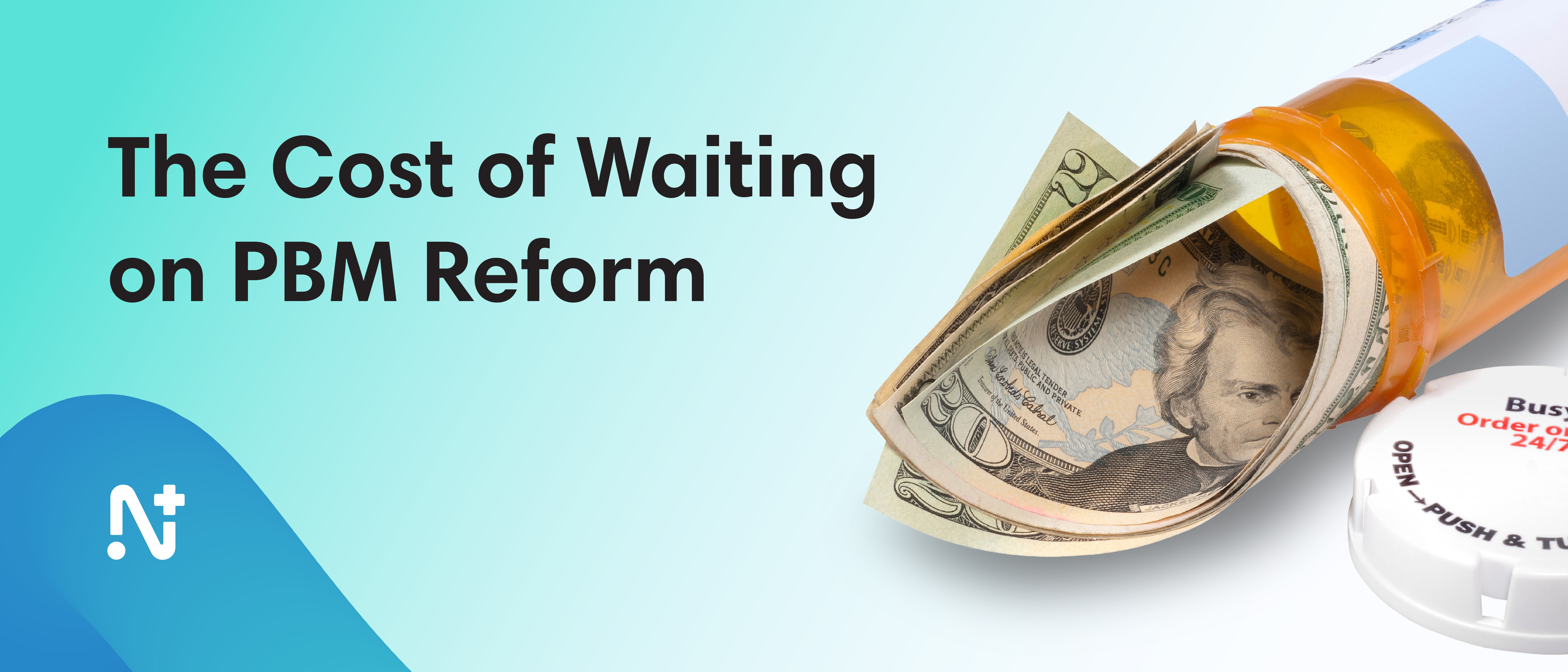PBM Reform: Why Business Leaders Can't Wait for Washington

The momentum for PBM reform looked unstoppable six months ago. Congress nearly passed sweeping changes in December 2024 that would have forced PBMs to pass through 100% of rebates and banned spread pricing across Medicare and commercial plans. Then politics intervened, and meaningful reform got stripped from the final legislation.
Here's where we stand today: The 2025 Reconciliation Bill passed by the House includes PBM reforms limited to Medicare and Medicaid only, with no changes affecting commercial plans.
For the 160 million Americans who get health insurance through their employers, Washington's latest effort changes nothing.
A System That Works Against You
Three massive corporations—CVS Caremark, Express Scripts (Cigna), and OptumRx (UnitedHealth)—control 80% of the market. These aren't neutral middlemen anymore. They're vertically integrated profit machines. Each owns pharmacies, negotiates rebates, and designs formularies that steer patients toward their own operations. They have unprecedented power to set prices and terms that benefit their bottom lines, not your employees.
The conflict of interest is so obvious that Arkansas just passed the first-in-the-nation law prohibiting PBMs from owning pharmacies, though CVS and Express Scripts immediately sued to block it.
The Big 3 profit most when drug prices are high and employers have limited visibility into their spending. In other words, they make more money when drug prices go up. They're literally incentivized to make your costs worse. And they’re good at it.
A Better Model Already Exists
While the Big Three optimize for their own revenue, a growing number of independent PBMs are structured around fee-based models and transparent pricing to align their success with your cost reduction goals. The difference is measurable:
In 2023, a large employer faced a pharmacy crisis. Despite an 85.9% generic dispensing rate, their pharmacy costs had jumped 30.8% in a single year, reaching $60 million annually. Off-label GLP-1 usage and limited oversight from their Big 3 PBM were driving unsustainable trend growth.
After switching to a transparent PBM model, the results came fast:
- Cost control: Per-member costs dropped 1.22% while member utilization increased 25%
- Prescription efficiency: Total prescription volume fell 23.5% through better targeting and adherence programs
- Strategic savings: Reclassifying off-label GLP-1 use alone saved over $1.5 million
- Member support: Copay card savings increased 222%, offsetting higher member cost-sharing
The employer achieved these results in under 12 months without reducing access to necessary medications. The difference was having a PBM partner focused on clinical outcomes rather than rebate maximization.
That level of clarity—and impact—is possible now.
Your Next Move
The solution isn't waiting for Washington or hoping state laws survive court challenges. It's taking control of your pharmacy spending today.
- Demand Full Transparency: Require your PBM to disclose all rebates, fees, and pricing structures. If they refuse, find one that will. Transparent PBMs exist and compete aggressively for business.
- Insist on Pass-Through Pricing: Every rebate dollar your PBM negotiates should flow back to you, not their profit margins. Milliman's 2025 Medical Index shows rebates represent 31-33% of drug costs, making this a major budget item.
- Audit Your Formulary: Question why expensive brand drugs get preferred placement over cheaper generics. Your formulary should minimize costs, not maximize rebates.
- Explore Alternative Models: Transparent PBMs operate on flat-fee structures instead of rebate retention. They align their interests with yours because their revenue doesn't depend on drug prices.
- Review Your Contracts: Most PBM contracts renew annually. Use that renewal cycle to negotiate better terms or switch to a model that works for you, not against you.
Companies switching to transparent pharmacy benefit models report better cost visibility and greater control over a significant portion of their healthcare spending.
The Real Cost of Waiting
Every month your company delays action on PBM reform costs real money. While you wait for Washington to act, the PBM practices of the Big 3 continue draining your healthcare budget. The savings you could capture today by switching to transparent PBM models compounds every quarter you delay.
You have a choice: keep funding a system designed to maximize PBM profits while hoping politicians eventually act or take control of your pharmacy spending now. The tools for change exist today. Your employees and your bottom line can't afford to wait for Washington to solve a problem that's been obvious for years.





